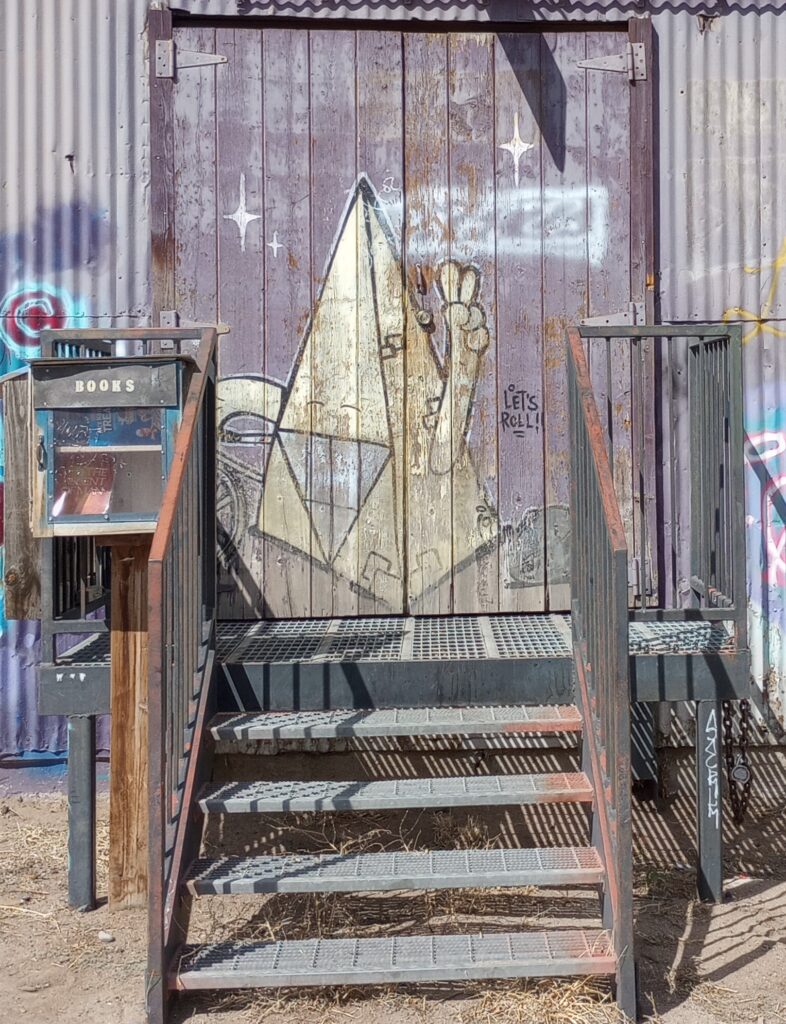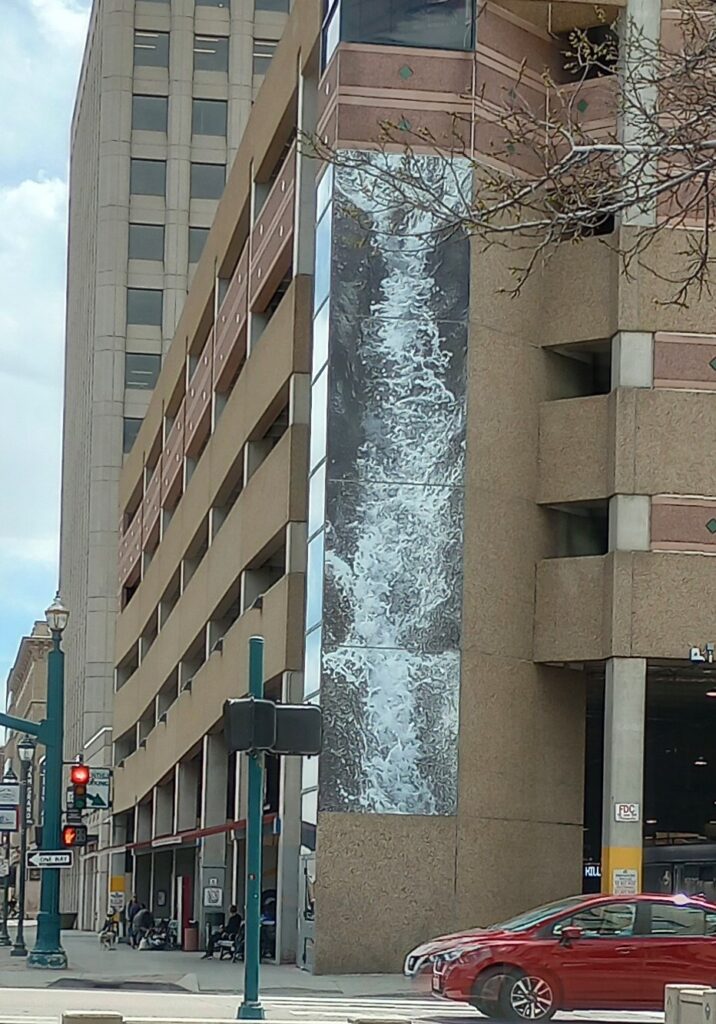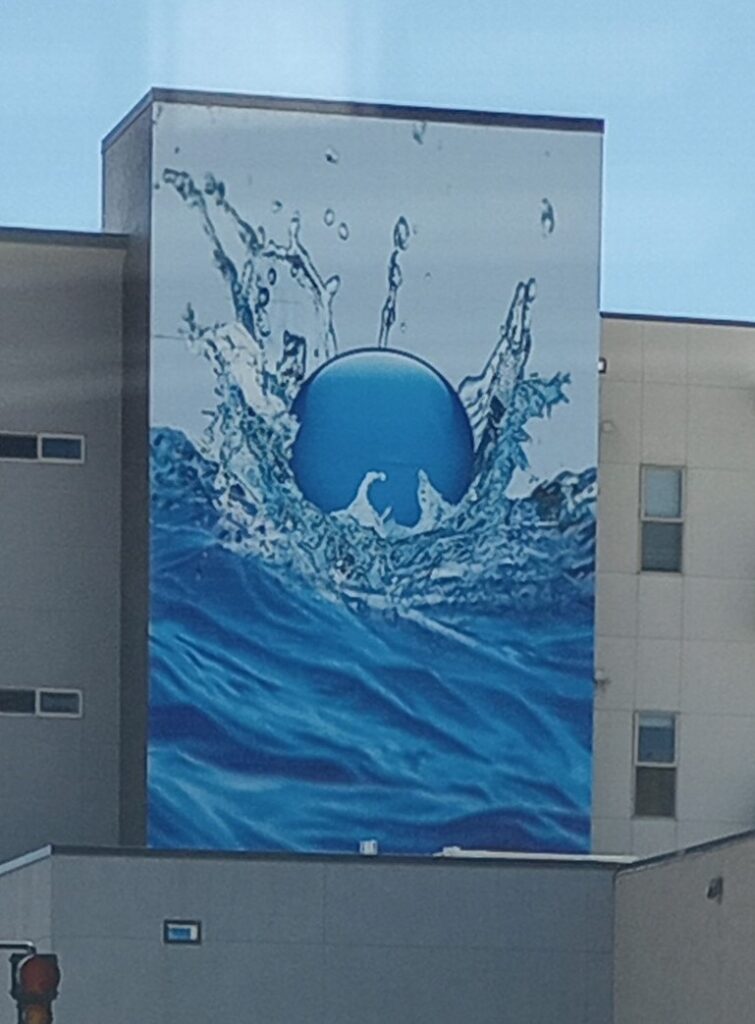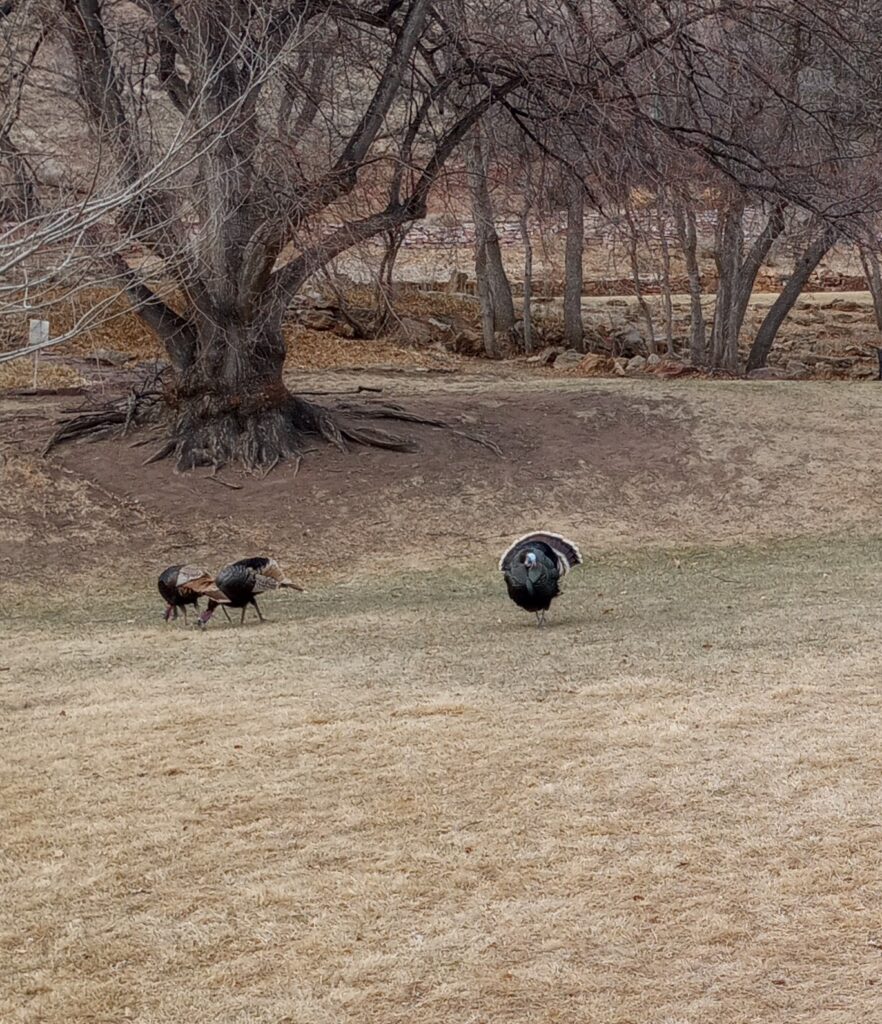My physical dictionary is so old that it does not include the current definition for “graffiti”. It does have the word “graffito: (plural graffiti) which is an inscription or drawing scratched on a rock or wall.” As this was written 60 years ago, it’s not very accurate, the meaning has slightly changed, and graffiti is a common part and annoyance of urban living now.

Only slightly newer than my dictionary, this graffiti bears the symbols of the the later 60’s. Perhaps the current tenant, now an elderly person, put it there years ago after this place stopped being grain storage for farmers (there’s none of them around anyway).

The doorway may have been the first spot for graffiti to appear, but it’s certainly not the last. This building remains a popular spot for tagging because it’s located under a bridge, down by the railroad tracks, so there is no one to notice or complain. The roof on the other side is visible from the highway, so the city paid our money to make a tourist billboard (like we need more tourists).

This one is in the standard sort of tagging with abstract stylized lettering, and one wonders, what does it say or mean? I have no clue, but the artist took the time to beautifully execute this, and it will soon be gone as the building gets gentrified.

In a nod to the style of Banksy, this bird graces an I-beam. (Also it takes much less time to execute before anyone notices what one is up to).

Our city likes to follow the current trends for downtown art and attractions, so they have been mimicking graffiti by adding paintings to the town. This piece is of water is cascading down the side of the bus depot, where those unfortunate enough to be forced to use our pathetic public transportation wait.

Water seems to have a harmless sort of symbolism. This is not a city building, but it’s an apartment for persons who wish to live downtown, instead of near a grocery store.

Yes, even our friendly police station has embraced the trend. This giant building is full of just offices, if you need to be arrested, you have to go to the county jail (which has no graffiti). This sign seems to be melting, perhaps because it is south facing. And again, we taxpayers funded this. Oh well, I guess that makes all of us locals patrons of the arts (and a magnet for tourists).





